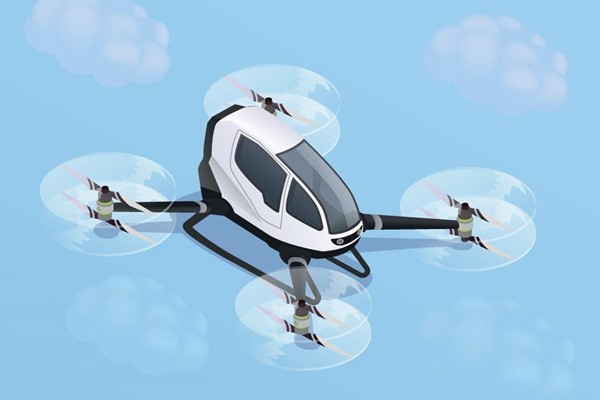It is shown that there is a high chance that South Korean companies will depend on foreign companies for parachute system even if they develop personal air vehicle (PAV) in order to materialize urban air mobility (UAM).
This is because relevant industries have not been able to establish themselves as adoption of safety standards to prevent drone crashes has been getting delayed. The South Korean Government needs to look for promising companies related to UAM-related industries and establish policies in order to gain competitive edge in UAM-related industries.
According to the Ministry of Land, Infrastructure and Transport (MOLIT) on August 2, South Korea’s Aviation Safety Act does not require drones to be equipped with safety devices for possible crash. Instead, the government is waiting on legislations such as verification of a need for safety devices including parachute.
Parachute system operates when unmanned aircrafts including drone when they free fall. It opens out a parachute in order to prevent any accident involving people or objects resulting from a crash. It can also be applied to PAV.
HexaFactory, which is a startup company, is the only South Korean company that developed parachute system for drones and is mass-producing it. Although there were companies that attempted to develop such system, it was heard that none of them were successful in mass-production.
On the other hand, parachute system industry is growing in other countries as countries are requiring installation of parachute system one after the other. The United States and the United Kingdom require industrial drones to be installed with parachute system if they have to fly over people. Chile also requires drones for public use that weigh over 6kg to be installed with parachute system.
The global market for parachute system is led by foreign companies based in the U.S. and Europe. In addition to parachute system for drone, they are also working on parachute system for PAV.

According to a market research company called Straits Research, the global market for parachute system used for unmanned aircraft was worth $96.73 million last year. It is estimated to be worth $153.3 million by 2026 after going through an average annual growth of 6.8%. Considering how many countries are putting out safety regulations related to drone and the process of commercialization of UAM, the market is expected to grow continuously even after 2026.
As drones are utilized in various fields such as shipping and monitoring, safety devices to prevent damage of expensive equipment that is loaded on drone and possible crash are being required.
Parachute system is also a must for PAV. Because PAV flies at a height between 300 and 600 meters, parachute needs to open up immediately when PAV goes on a free fall in order to maintain safety of passengers. Because parachute can also be placed on top of propeller, there is not any technological limitation. The global PAV market is expected to go through a rapid growth especially as multinational automotive manufacturers such as Hyundai Motor Company, Toyota, and Audi are all in the market. This is the reason why many benefits are expected on the global parachute system market.
Some say that the government needs to look for promising companies from relevant industries that can create synergy with Hyundai Motor Company and urgently prepare support measures. As the government looks to commercialize UAM in 2025, there is not much time in order to establish an UAM industry ecosystem that can collaborate starting from development stage of PAV.
“Because South Korea does not have any groundwork for the parachute system market, there is a high chance that companies will have to import parachute systems from foreign companies in the future.” said Choi Jae-ho who is a consultant for Foundation of Korea Automotive Parts Industry Promotion. “We need support from the government for potential businesses in the future.”
Staff Reporter Park, Jinhyung | jin@etnews.com